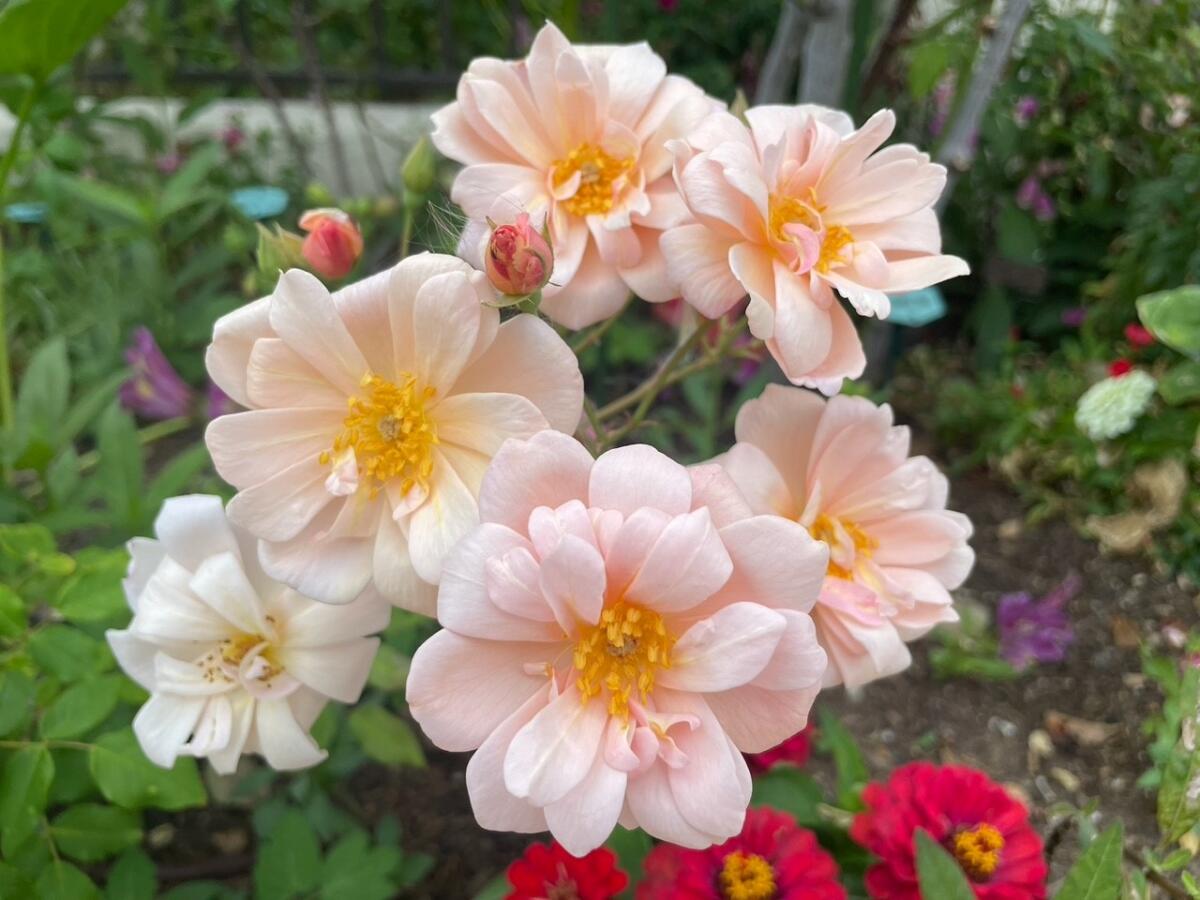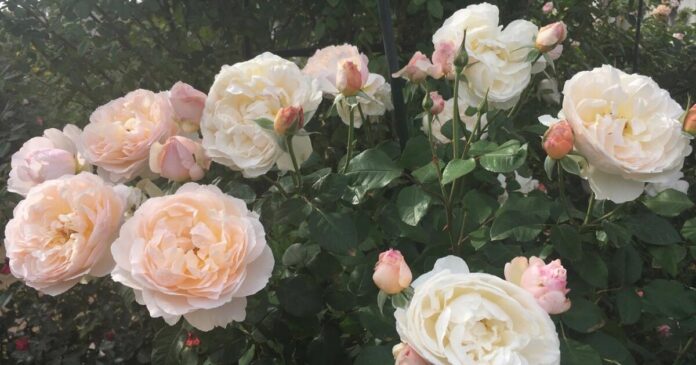The Old Testament tells us in the book of Ecclesiastes that “to everything there is a season.” This wise saying really resonates with gardeners. We like our seasonal “to-do” calendar because we know that staying on track with garden tasks helps keep our roses healthy and blooming. And checking items on our list as “done” always brings satisfaction and a sense of accomplishment.
But periodically we need to examine the task and its timing. Labor Day weekend is traditionally the weekend when most avid rosarians do their fall pruning and fertilizing. Should we continue to do this seasonal practice on Labor Day, should we do it later or should we cross it off our to-do list altogether? Here are two issues we need to consider:
- Is it too hot in my garden to fall prune in September?
- Am I unwittingly providing chilli thrips with an abundant feast of plenty?
What is fall pruning?
The purpose of fall pruning is to initiate fresh new foliage and buds. Stems that are thinner than the diameter of a pencil do not produce big blooms or full clusters of blooms. So, to promote them, we cut thin, leggy stems down to thicker more substantial stems and we remove twiggy growth and “doglegs.”
We do not strip off the remaining leaves and we do not cut as much off the height of the bush as we do in the winter. We follow up by fertilizing our roses. This fall routine can result in a magical fall rose garden full of blooms.
Those are the pros of fall pruning. Let’s now examine the cons.
Is it too hot to fall prune?
In the spring and in cooler weather, we generally deadhead established healthy roses at an outward-facing bud eye at the second or third five-leaflet set of leaves. Roses are sun lovers but temperatures over 85 degrees affect the plant growth processes of photosynthesis, respiration and transpiration.
So in summer when the weather heats up, we are more conservative, we maintain more foliage on the bush and we deadhead very lightly because leaves cool the plant through transpiration, and they also shade the soil, reducing water loss.
In some states, the days in September are cooler and it feels like fall is approaching. But this is not the case in California. In September, we feel like there is still a long, hot summer ahead. In many regions in San Diego County, temperatures can be high even into October. In addition, we often have hot, dry Santa Ana winds in these months.
To prevent plant stress when the weather is very hot and windy, we should not remove foliage. We should also irrigate longer and water wash leaves to compensate for water loss due to transpiration.

‘Perle d’Or’
(Rita Perwich)
Am I preparing a feast for chilli thrips?
Hot days and dry winds are prime weather conditions for chilli thrips. A relatively new pest in California, their arrival in Southern California gardens in 2017 turned the volume down on every other pest and disease in the garden.
These most maddening pests in our San Diego gardens hit us where it hurts the most. Their prime target is our roses’ tender new foliage, buds and blooms and the fresh new basal breaks at the base of the plant. If it is fresh and tender, they will feed on it and disfigure it.
More facts to know about chilli thrips
It is hard to battle a pest we cannot see, and we cannot observe chilli thrips at any stage of their life cycle with the naked eye. By the time we see their first damage, they already have an established life cycle under way in the garden.
The course of damage on our roses is horrifically rapid. Chilli thrips larvae and adults pierce and suck sap on new growth and tender buds, which results in misshapen and puckered foliage.
Within a few days the buds and the backs of the leaves have ugly brown and bronze streaks, and the deformed and scorched blooms which follow are the unmistakable signature damage of these pests. A severe chilli thrips infestation can defoliate a plant.
Giving up wonderful fall blooms and breaking with ingrained tradition is not easy, but rosarians who have battled chilli thrips in their gardens in previous years or who are currently battling chilli thrips should really deliberate on the wisdom of fall pruning. Do we really want to prompt our roses to put energy into a wealth of tender new growth and blooms when these pests are the likely beneficiaries of the abundant feast?

‘Sunset Dreams’
(Rita Perwich)
Fertilizing when the weather is hot
Fertilizer provides roses with the nutrients they need, and it also promotes new growth. In hotter months, it is preferable to use an organic granular fertilizer, which can provide the roses with a steady, slow release of nutrients for three months. Granular fertilizers must be watered in well to enable the microorganisms and bacteria in the soil to convert the nutrients into a form that roses can absorb. Skip fertilizing on days when the weather is very hot, and do not fertilize roses after mid-October.
Nitrogen is very mobile and depletes from the soil quickly. Periodically throughout the growing season, if we notice that our roses’ leaves appear a uniform light yellow-green color, we may need to supplement with nitrogen, such as fish emulsion (4-1-1). Hot temperatures cause plants to draw up liquids faster, so to avoid leaf burn, plants must be well watered before and after application of fertilizer, and fertilizers should be more dilute. Using a more dilute fertilizer also aims to avoid the rapid new growth that is so attractive to chilli thrips and other pests.
If you decide not to fall prune
- Continue to keep your plants healthy by cutting out damaged and diseased canes and thinning dense clusters of leaves in the center of plants. This increases air circulation and minimizes disease and “undercover” pests.
- Damaged canes are susceptible to cane disease. Shorten long, lanky canes that can whip around in the wind. This is to avoid thorn damage to other canes.
- Clean up fallen leaves and petals to get rid of nesting used by chilli thrips, spider mites, caterpillars and other pests.
- Pencil in fall pruning and fall fertilizing on your calendar, but keep your eraser handy. Labor Day weekend may no longer be “the season” for your garden.
Perwich is a member of the San Diego Rose Society, a consulting rosarian and a master gardener with UC Cooperative Extension.



